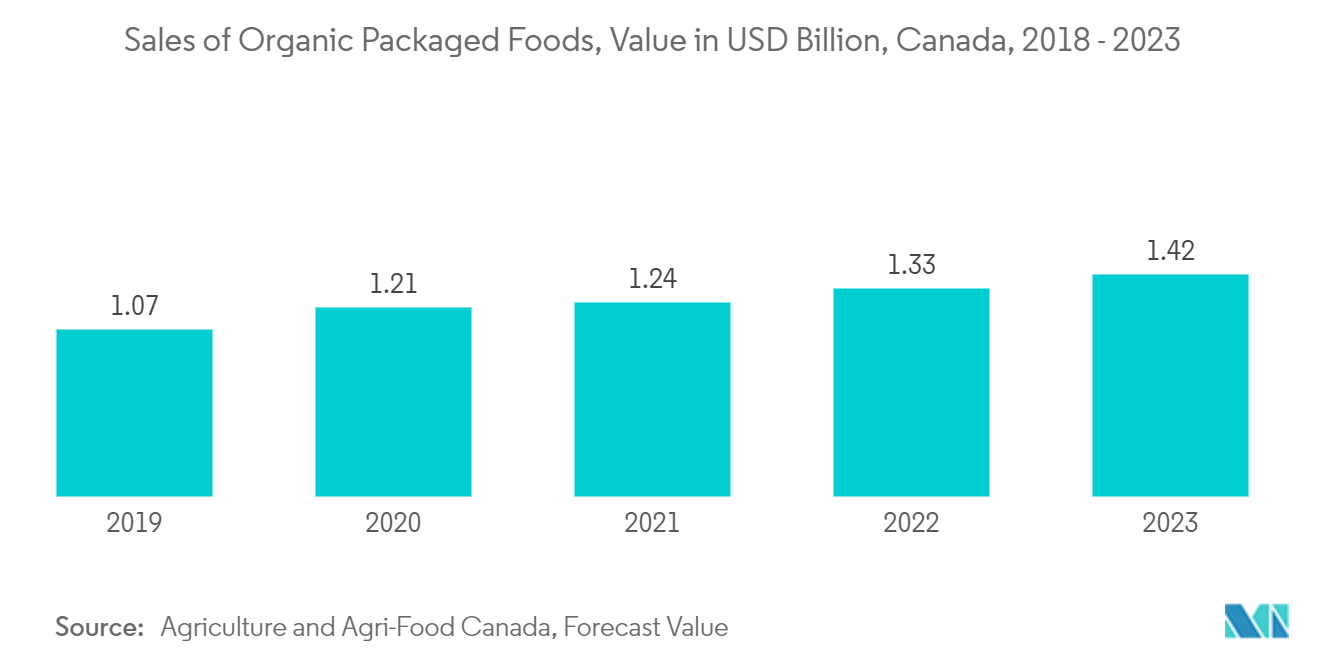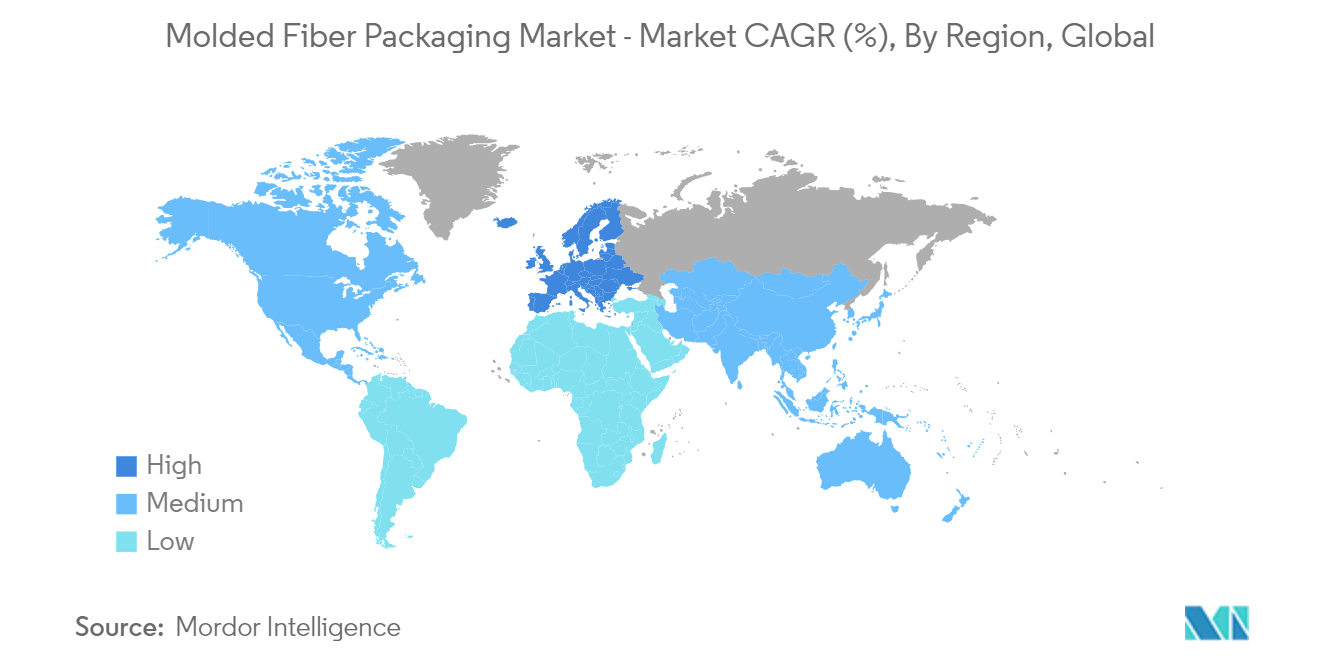Market Trends of Molded Fiber Packaging Industry
Food and Beverages to be the Largest End-user Industry
- Molded fiber products are increasingly used in the food-related sector to replace plastics and meet the growing demand for eco-friendly and sustainable products. Applications for the food market are subject to strict standards, and they must comply with them. In addition to some basic strength specifications, such as tensile and thermal qualities, improved barrier properties are crucial for materials in the food market sector.
- The food packaging products made of molded pulp include clam-shell and takeout meal containers, egg trays and cartons, and fruit, vegetable, berry, and mushroom trays. The majority of the food packaging items on the market utilize trays.
- Further, the packaging must have barrier qualities that reduce the exchanges of gases and water vapor between the food and the environment to slow down food's chemical, physical, and microbiological changes. As a result, for materials intended for food-related product packaging, the permeability to water vapor and oxygen are crucial properties to consider.
- The relatively big e-commerce, wine, and other beverages segments are expected to register the most significant sales increases in the protective packaging industry. Prices for custom tooling are reducing, and people are becoming more conscious of molded fiber's environmental and performance benefits.
- Soft drink companies are still trying to decrease the amount of pollution and waste produced by their packaging materials. Even though people are becoming more negative towards plastic, it is still the most used material for soft drink packaging worldwide. However, many companies in the molded fiber packaging market are expanding their footprints and boosting their market segment.
- Further, according to Agriculture and Agri-Food Canada, the sales value of packaged foods in 2018 was valued at USD 1 billion and was expected to reach USD 1.42 billion in 2023. Such growth in the food industry is expected to further drive the market for molded fiber packaging.

Europe is Expected to Dominate the Market
- Western Europe has emerged as one of the most important markets for mold fiber packaging, with industrialized countries such as the United Kingdom having a larger urban population and higher disposable income. According to the Packaging Federation of the United Kingdom, the package manufacturing industry generates GBP 11 billion (USD 13.99 billion) in yearly sales. It employs over 85,000 people, accounting for 3% of the manufacturing workforce in the country. It contributes substantially to the UK economy and is essential to the packaging supply chain.
- Germany's packaging is extensively used in the food industry. Consumers seek products that provide convenience, protection, and ease of transportation, which drives demand for various packaging, particularly plastic replacements in food products, particularly dairy food, meat, and prepared meals. Furthermore, strict limits on single-use plastics and high demand for sustainable packaging drive market expansion.
- The growing demand for eco-friendly protective packaging in bowls, trays, and other products is anticipated to boost market growth in Italy. Molded fiber packaging is a 100% recyclable, environment-friendly packaging solution made from plant fibers. The raw materials used to manufacture molded fiber packages are pulp, natural fibers, and water. Molded dissolving pulp products are primarily used as packaging solutions in the food industry, which is currently driving the market.
- Spain's growing urbanization, tourism, and e-commerce markets are expected to generate demand for the molded fiber packaging industry. The expanding middle class in emerging European economies, such as Spain, is creating demand for protective packaging solutions, such as heavy-duty molded pulp packaging, subsequently driving the market.
- With the rapidly increasing food service business in Eastern European countries, the Eastern European market is expected to grow over the projection period. Eastern European countries' demand for molded pulp materials for egg, meat, and fruit packaging is expected to contribute to market growth.


